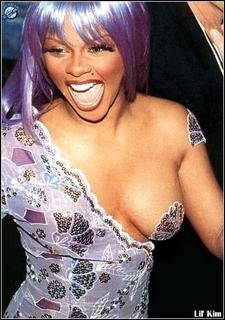Racial Imagery (Again) in the Courtroom

We live in a very frightening time where most people believe that we have fully eradicated racism. Nevertheless the importance of race and racism in the United States continues to lurk in the deep recesses of society and remains as strong as ever. Most Americans believe that racism was eradicated by the subsequent passing of legislation, such as the 13th and 14th Amendments and Title XII of the 1964 Civil Rights Act. White people are no longer "responsible" for combating racism as they can merely point to the legislation and deny that it exists. Such legislation lifts whitey off the hook. This of course is not always the case, there are white folks still fighting for equality but when compared to the larger social body, they exist in relatively small numbers.
Only occasionly does overt racism rear its ugly head in its most blatant form for everyone to see (e.g. Rodney King). Such instances are usually spotlighted by the media and create fervor and outrage as being an overt racist is no longer status quo, however rarely do the media concern itself with overt blatant racism without foolproof evidence, e.g. videotapes, as such instances, are easily dismissed by rich white politicians and others alike. The same could be said of sex discrimination, homophobia, and all the other isms for that matter however I will not be addressing these here.
A direct descendent of racism is the use and reliance upon racial imagery by the media (e.g. news broadcasts that spotlight the stereotypical black criminal or the stereotypical black mother on welfare, or blockbuster movies that exploit stereotypes such as Training Day in which Mr. Washington was awarded an Oscar for his part in playing the “role” of a “black person”), racial imagery by the police (e.g. racial profiling), racial imagery by the courts (pictures, stories, and examples used for instance by prosecutors, such examples are often exemplified in the television series Law and Order), and racial imagery by judges (Johnson 2001).
Yesterday, female rapper Lil’ Kim whose real name is Kimberly Jones and is black was sentenced to a year and a day in prison and ordered to pay a $50,000 fine for perjury after she admitted in a courtroom that she had lied to a grand jury during her trial (Preston 2004). Racial imagery was used during her two-hour hearing by Judge Lynch (interesting last name huh?) who, as it was reported, repeatedly compared Lil’ Kim to Martha Stewart, the rich whitey homebody who was convicted last year on similar charges in the same courthouse no less by a Federal District Court in Manhattan. Judge Lynch, whose race was undisclosed thereby implying he is white, noted that Martha “happens to be older and whiter and whose entertainment following is richer,” emphasizing the specific brand of racial imagery known as the “us-them” imagery (Johnson 2001; Preston 2004:A22). How necessary was it that Judge Lynch made this racial distinction in the sentencing of Lil’ Kim? Moreover, what implications do you suppose arise concerning our current criminal just-us system?
Works Cited
Johnson, Sheri Lynn. 2001. “Racial Derogation in Prosecutors’ Closing Arguments” Pp.
79-114 in Petit Apartheid in the U.S. Criminal Justice System edited by
Dragan Milovanovic and Katheryn K. Russell. Durham, NC: Carolina Academic
Press.
Preston, Julia. 2005. “Lil’ Kim Gets One-Year Prison Sentence and Admits She Lied in
Testimony About Shootout.” New York Times July 7.

2 Comments:
Hello. And Bye. Thank you very much.
Hello. And Bye. Thank you very much.
Post a Comment
<< Home